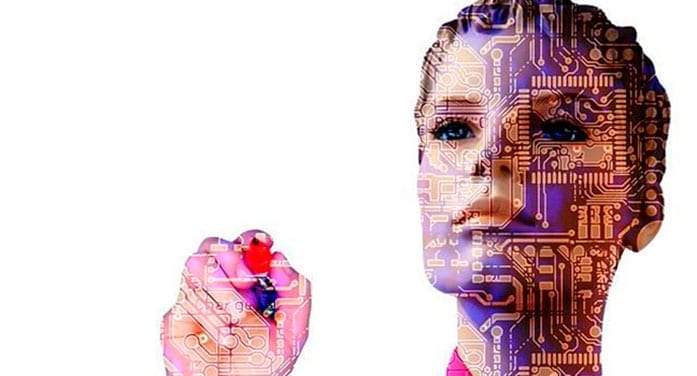Cobots offer a unique blend of flexibility, safety, and cost-effectiveness
The advent of collaborative robots, or cobots, marks a transformative chapter in the story of modern manufacturing. These highly adaptable machines are rapidly changing how factories operate, offering a blend of efficiency, safety, and human-robot collaboration that was once the stuff of science fiction.
The Role of Cobots in Modern Manufacturing
A key advantage of cobots is their remarkable flexibility. Unlike conventional industrial robots, which are generally built for specific tasks, cobots can be easily reprogrammed and adapted to various phases of the production process. This adaptability makes them particularly well-suited for today’s manufacturing environments, where product lines and requirements often shift rapidly.
Cobots can perform a wide range of tasks, from assembly and welding to packaging and quality inspection. They can be integrated into existing production lines with minimal disruption, allowing manufacturers to scale operations quickly and efficiently. This adaptability is particularly valuable in industries like automotive, electronics, and consumer goods, where product customization and rapid market shifts are common.
Cobots are engineered to collaborate with human workers, boosting productivity while preserving jobs. This cooperative approach distinguishes cobots from traditional robots. With advanced sensors and safety features, cobots can function safely near humans, making them indispensable for tasks that require precision or human supervision.
Key Benefits of Using Cobots
Safety is a critical concern in any manufacturing environment, and cobots excel in this area. Built with numerous safety features, including force sensors, vision systems, and responsive controls, cobots are designed to prevent accidents and injuries. They can detect human presence and adjust their speed or stop entirely to avoid collisions.
This safety-centric design not only protects workers but also ensures compliance with increasingly stringent safety regulations. By reducing the risk of workplace accidents, cobots contribute to a safer and more secure manufacturing environment, fostering a culture of safety and responsibility.
Increased Efficiency and Productivity
Cobots are a powerful tool for increasing efficiency and productivity in manufacturing. By automating repetitive and time-consuming tasks, cobots free up human workers to focus on higher-value activities, such as quality control, innovation, and process improvement.
For instance, in packaging and material handling, cobots can work continuously without breaks, speeding up the process and reducing errors. Their precision and consistency ensure that products are assembled and packaged correctly every time, leading to fewer defects and less waste.
The result is a more streamlined production process, with higher output and lower costs. This efficiency boost can be a game-changer for manufacturers looking to stay competitive in a fast-paced global market.
Improved Quality Control
Quality control is another area where cobots shine. Thanks to their precision and consistency, cobots can perform tasks with a level of accuracy that is difficult for human workers to match. This is particularly important in industries like electronics and medical devices, where even minor defects can have serious consequences.
Cobots can also be equipped with advanced monitoring and feedback systems, allowing them to detect and correct errors in real-time. This continuous quality assurance process helps to maintain high standards and reduce the likelihood of defective products reaching the market.
By enhancing quality control, cobots help manufacturers produce better products, build stronger brands, and maintain customer satisfaction.
The Technology Behind Cobots
The technology that powers cobots is both sophisticated and cutting-edge. At the heart of cobot functionality are advanced sensors and artificial intelligence (AI). These sensors allow cobots to perceive their environment, detect obstacles, and interact safely with human workers.
AI plays a crucial role in enabling cobots to learn and adapt to new tasks. Through machine learning algorithms, cobots can analyze data from their sensors and improve their performance over time. This capability allows them to handle increasingly complex tasks and respond to changes in their environment with greater agility.
The combination of sensors and AI makes cobots more than just machines; they are intelligent partners in the manufacturing process, capable of working alongside humans in a dynamic and responsive manner.
Programming and User Interface
Cobots are designed to be user-friendly, with intuitive programming interfaces that make them accessible to a wide range of users. Unlike traditional robots, which often require specialized programming knowledge, cobots can be programmed using simple, graphical interfaces or even by physically guiding the robot through the desired motions.
This ease of use means that manufacturers can quickly deploy cobots without the need for extensive training or technical expertise. It also allows for greater customization, as cobot tasks can be easily modified or updated to meet changing production needs.
The role of software in expanding cobot applications cannot be overstated. As programming languages and interfaces continue to evolve, cobots will become even more versatile and capable, opening up new possibilities for automation in manufacturing.
Conclusion
In summary, cobots are revolutionizing the manufacturing industry by offering a unique blend of flexibility, safety, and cost-effectiveness. These collaborative robots are not only enhancing productivity and efficiency but also improving workplace safety and quality control. The technology behind cobots, including sensors, AI, and user-friendly interfaces, makes them powerful tools for modern manufacturing.
With cobots at the forefront of this transformation, the manufacturing landscape is set to become more dynamic and responsive than ever before. By integrating these versatile machines into their operations, manufacturers can stay ahead of the curve and thrive in an increasingly competitive world.
If you’re interested in exploring how cobots can enhance your manufacturing processes, you may want to consider Universal Robots, a leader in collaborative robotics.
This content is a joint venture between our publication and our partner. We do not endorse any product or service in the article.

